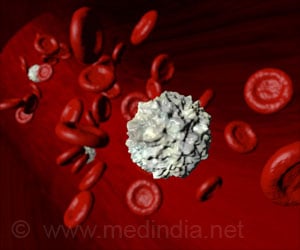
Preparation of implantable micro-scale LED device (micro-LED) for PDT
Go to source). Their innovation involves a wireless LED device that can be implanted and paired with a light-sensitive dye. This combination not only kills cancer cells but also activates the immune system's ability to target cancer. The study detailing this advancement was published in Photodiagnosis and Photodynamic Therapy.
‘Did You Know?
The device, the size of a grain of rice, kills cancer cells and triggers immune responses, heralding a new era in cancer therapy. #medindia #cancertreatment’




The device, the size of a grain of rice, kills cancer cells and triggers immune responses, heralding a new era in cancer therapy. #medindia #cancertreatment’
Enhanced Cancer Cell Destruction through Targeted Light Activation
“Certain colors of light penetrate tissue deeper than other ones,” said Thomas O’Sullivan, associate professor of electrical engineering and co-author on the paper. “It turns out that the kind of light — in this case green — that doesn’t penetrate as deeply has the capability of producing a more robust response against the cancer cells.”Before the light can be effective in destroying cancer cells, a dye with light-absorbing molecules must be administered to the cells. The device turns on, the dye transfers the light into energy and that energy makes the cells’ own oxygen toxic — in effect, turning the cancer cells against themselves.
While other treatments also weaponize the cells’ own oxygen, this device causes a particularly serendipitous form of cell death.
Harnessing Pyroptosis for Immune Activation Against Cancer
“Working together, biochemistry graduate student Hailey Sanders and electrical engineering graduate student SungHoon Rho perceptively noted that the treated cells were swelling, which is the hallmark of a kind of cell death, pyroptosis, that’s particularly good at triggering the immune response,” said Bradley Smith, the Emil T. Hofman Professor of Science and co-author on the paper.“Our goal is to induce just a little bit of pyroptotic cell death, which will then trigger the immune system to start attacking the cancer.”
Advertisement
O’Sullivan noted that the device, which is the size of a grain of rice, can be injected directly into a cancerous tumor and activated remotely by an external antenna. The goal is to use the device not only to deliver treatment but also to monitor the tumor’s response, adjusting signal strength and timing as needed.
Advertisement
- Preparation of implantable micro-scale LED device (micro-LED) for PDT - (https://www.researchgate.net/figure/Preparation-of-implantable-micro-scale-LED-device-micro-LED-for-PDT-a-Optical-images_fig1_364394505)
Source-Eurekalert















